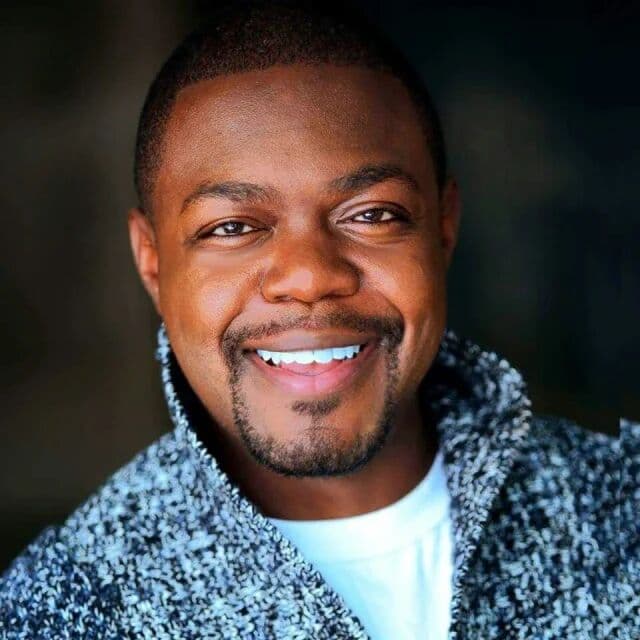5 Tips On How You Can Get Stand-In Work As An Actor

5 Tips On How You Can Get Stand-In Work As An Actor

Stand-Ins are an unsung part of a production crew. If you’ve ever been on set, they are usually seen and not heard, but they are an integral part of assisting the camera department (and other crew such as grips, electric, props, etc.) in prepping, blocking, and lighting a scene. They are also there to give actors a break between takes so they can change costumes, go to makeup, rehearse, or just rest.
For an actor, stand-in roles are one of the best ways to learn about on-camera work and the rigors of a professional set, without the pressures to deliver. But how do you get into stand-in work? It’s not something with much information widely available, and depending on where you live, the work could be union or non-union. Also, as the movie/TV credits roll, it's rarely posted. To help you access these vital roles, here are five tips on how to get into stand-in work today.
Know your type and doppelgangers
The first step is acknowledging what “type” you are. Have you always been told you look like a certain actor or actors? Let’s start there. If you’re a dead ringer for a specific person, you could also be their photo double or stunt double (if qualified). Many actors keep the same stand-ins and take them along for the ride for many years. However, stand-in work is less about how much you look like someone versus the actor's skin tone, height, and weight. To use me as an example, I know that I could stand-in for any African-American actor that falls into a range of 5’4” to 5’7”, 190 to 210 pounds, and have a darker skin tone.
Don’t fall into the trap of believing you have to be a certain size or height to work. Shorter adults actually stand-in a lot for children because they aren’t restricted by the same time limits as minors. The camera department is counting on you to match close enough to measure the distance correctly for focus, block angles for framing, and contrast tone for lighting. There will be rare instances where the actor and the stand-in are wildly different. At that point, it is an emergency case of just needing a body.
Once you know the size ranges you fall under, notice any actors in the same category as you. I’m not just talking about the stars, but everybody: character actors, supporting players, day players, etc. Because if they have a principal role in the production, they’ll need a stand-in.

Extras casting agencies
Many don’t know that an extras casting agency is the main avenue of obtaining stand-in work. Not a theatrical agent, not a commercial agent, not a modeling agent, but extras casting. Extras casting agencies routinely post breakdown needs for stand-ins on their website and Facebook pages. When you register for their database, make your intentions known either written, verbally, or within the intake form that you want to do stand-in work. Register with multiple agencies to be aware of as much work as possible if you are in a major market like Los Angeles, New York, or Atlanta.
Most agencies want “experienced” stand-ins because they are not as easily replaceable. If you have experience, definitely list the productions you’ve worked on. If not, don’t lie. Your inexperience will immediately be evident on set. If the experience isn’t there, the extras casting agency will want you to prove your responsibility and accountability by doing background work for them first.
Observing the 2nd team on set
When you are on set as background, watch what the stand-ins are doing whenever possible. How are they standing? Where are they standing? Are they reading lines? Every set is different in what their 2nd team does. Some productions literally have the 2nd team stand there for marks, set up, and leave. Other productions have the 2nd team run full camera rehearsals with blocking or even read off-camera lines against a principal actor during a take. Now, I know if you are background, observing the 2nd team is not always possible. When you are working, they’re not. When you aren’t working, you’ll probably be shooed back to extras holding so the crew can work, especially if the background is large. The best scenario is to be in a scene of a small number of background (five or under), where you could still be on set in between takes, but out of the way.

Being on the radar of the 2nd 2nd AD and Background PA
When you’re on set as background, the Background PA is your immediate point of contact at call time and in holding. While you’re actually on set, the 2nd 2nd AD will be directing you in scenes. There are some stand-ins hired the day of. They are usually the one-liner co-stars. Sometimes, there’s a no-call, no-show of a guest star or supporting player. Now, the 2nd 2nd Ad will have to “pull from BG” on the call sheet.
The 2nd 2nd would confer with the background PA or just leave it up to the background PA to choose based on the closest skin tone and size. If the background PA makes an announcement asking if anyone has stand-in experience, this is where you need to make your intentions known. If you’re able to see a call sheet (very hard to come by and inaccessible to BG), look in the stand-in column (normally below the main cast) and see the actor's name and “pull from BG” next to it. If you look this person up and match them, get to the background PA as early as possible to suggest you can stand-in for the day. If you are pulled from BG to stand-in; make sure your pay voucher is updated to reflect the increase in pay for the day, and proceed to listen to the commands of not only the 2nd 2nd AD, but especially the 1st AD (who is in command of running the set), and any camera crew.

Getting to know other stand-ins
This is easier to do when you are pulled from BG to be a stand-in for the day or if you book something outright. It can be difficult initially to get to know the stand-ins because they are usually stationed near set, whereas background holding is far away offset. But if you are given a chair and some tape, ask questions, or get names, see what other shows or films they’ve been on. Most regulars would be happy to oblige, giving tips because one person on the 2nd team unit that’s TOO green makes the whole 2nd team look bad.
One of the best things that could happen is you stand-in on a series as a top show guest star, working multiple days. The goal is that you can experience more situations and hopefully develop fast relationships with other second-teamers.
Stand-in work can be a great way to get on-set experience, get your foot in the door, and meet others in the industry. If you haven’t tried getting stand-in work, try these tips and let us know how they work for you!
Let's hear your thoughts in the comments below!
Got an idea for a post? Or have you collaborated with Stage 32 members to create a project? We'd love to hear about it. Email Emily at emily@stage32.com and let's get your post published!
Please help support your fellow Stage 32ers by sharing this on social. Check out the social media buttons at the top to share on Instagram @stage32, Twitter @stage32, Facebook @stage32, and LinkedIn @stage-32.
About the Author

Kevin Marshall Pinkney
Actor, Production Assistant
Originally from Chicago. Kevin's love for film & Television and travel started at an early age. He went on to study at the University of Southern California for Theatre & Cinema-Television business. Combining both passions has resulted into visiting 15 countries, 43 states, and working in 11 markets...









